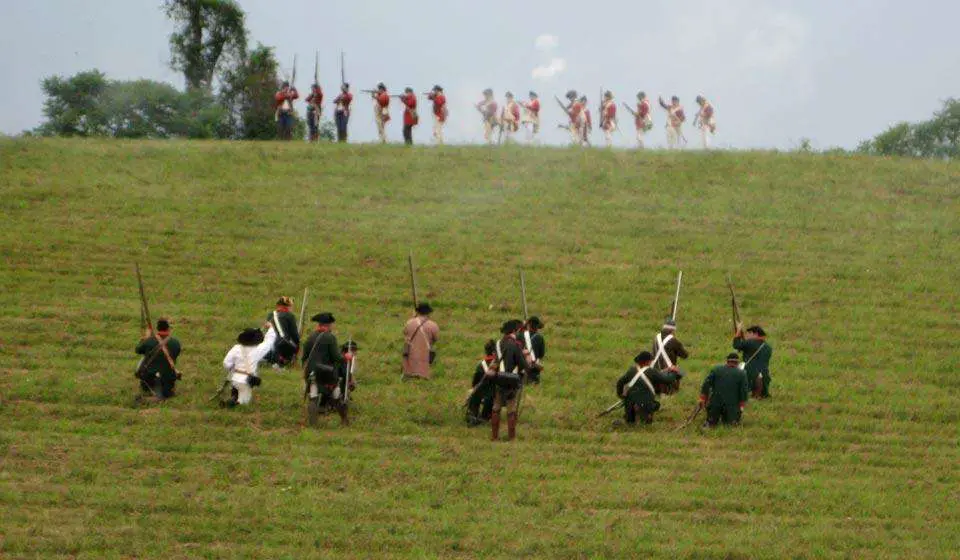The Ladies of Gray had good reason to despise the Confederacy and its people. The small Maine town sent 200 of its sons—more than a tenth of its population–to fight for the Union in the Civil War. There are 178 Civil war veterans resting in peace at the Gray Village Cemetery.
Maine sent proportionately more men to serve in the Union forces than any other state. Gray claimed to have sent more men per capita than any other town in Maine.
But, in a foreshadowing of Memorial Day ceremonies that started after the war, the Ladies of Gray showed compassion and forgiveness for the Confederate soldier who arrived in their midst.
Ladies of Gray
Gray at the outbreak of the Civil War had about 1,700 residents and a woolen mill, the first in America powered by water. The town also had sawmills, a brickyard and prosperous farms.
The son of a prominent Gray family, Charles H. Colley, enlisted in the 10th Maine Infantry Regiment on Oct. 4, 1861.
On Aug. 9, 1862, Sgt. Colley was wounded in the knee at the Battle of Cedar Mountain in Culpeper, Va. Promoted to second lieutenant, the 29-year-old died of septicemia on September 20 in a hospital in Washington, D.C.
When notified of his death, his family asked to have his body sent home to Gray. During the war, funeral directors loitered around the hospitals, offering to embalm the dead—for a price, of course. Colley’s grieving mother Sally arranged to have her son’s body embalmed and shipped by rail back to Gray.
When the plain, lead-lined casket arrived, someone—probably a family member—opened the lid. Charles Colley wasn’t in it. Instead, an unidentified Confederate soldier dressed in his gray uniform lay in the pine box.
They had no place to return the body. And so the Ladies of Gray had the unknown Confederate soldier buried in the Gray Village Cemetery. After the war, they raised enough money for a headstone on his final resting place. It reads,
“Stranger
A Soldier of the late war died 1862.”
Memorial Day
Ladies all over the country were doing something similar. People on both sides began to long for reconciliation after the agony and bloodshed of the war. The women’s groups began to act on that impulse.
In Columbus, Miss., a women’s memorial association visited the local cemetery on April 25, 1866. They put flowers on the graves of Confederate soldiers who died at Shiloh. Nearby were the bare graves of Union soldiers who had also died at Shiloh. That disturbed the ladies of Columbus, so they put some of their flowers on those tombs.
That act of kindness, so similar to that of the Ladies of Gray, inspired Horace Greeley’s New York Tribune to publish an editorial about it. The Atlantic Monthly also published a poem called “The Blue and the Gray” by Francis Miles Finch.
Women’s groups all over the country began decorating the graves of the war dead with flowers. Today, at least 25 towns claim credit as the birthplace of Memorial Day.
The first national Memorial Day – then called Decoration Day – happened on May 30, 1868. Gen John Logan, commander in chief of the Grand Army of the Republic, issued an order “for the purpose of strewing with flowers or otherwise decorating the graves of comrades who died in defense of their country during the late rebellion, and whose bodies now lie in almost every city, village, and hamlet churchyard in the land.”
A few days later, Washington officials, including Gen. Ulysses S. Grant, presided over a national ceremony at Arlington National Cemetery. From then until 1871, the United States celebrated May 30 as Decoration Day.
In 1971, the federal government changed Decoration Day to Memorial Day, to be held on the last Monday in May.
Charles H. Colley
Perhaps the Ladies of Gray still have some work to do. Charles H. Colley’s family asked the Army to send them the right body. They may not have looked inside that time.
In the Gray Village Cemetery lies a soldier with the headstone, Charles H. Colley. According to the inscription, he was ‘among the first to rally in defense of his Country.’
But it t appears the Army failed. According to War Department records, Charles H. Colley is still buried in a cemetery in Alexandria, Va., that preceded Arlington.
So is there a second unknown soldier in Gray, Maine?
Image of the Stranger’s headstone By DetroitWheels74 – Own work, CC BY-SA 4.0, https://commons.wikimedia.org/w/index.php?curid=77620758. Image of Gray Village Cemetery By RootsLilla – Own work, CC BY-SA 4.0, https://commons.wikimedia.org/w/index.php?curid=42261992. With thanks to Confederates in the Attic (and Maine cemeteries, too) from Maine at War by Brian Swartz. This story was updated in 2023.






































